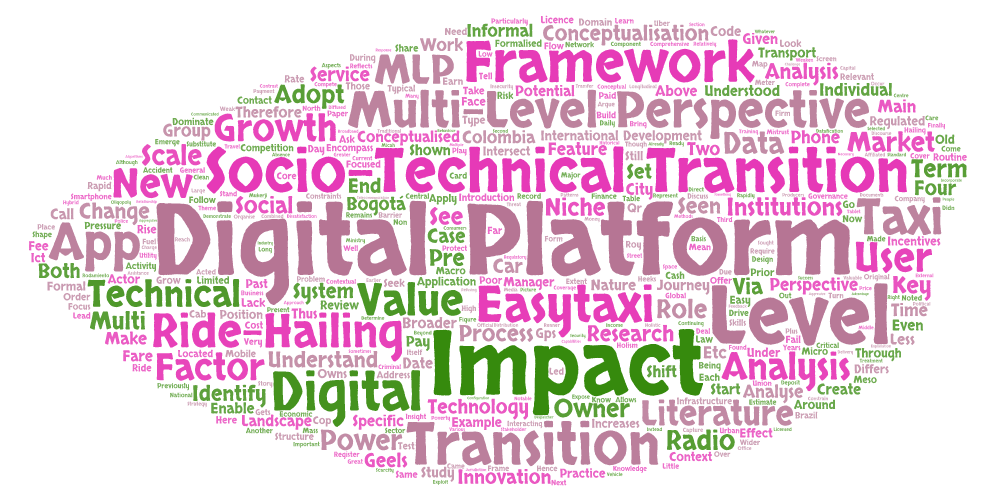Richard Heeks, Iftikhar Ahmad, Shanza Sohail, Sidra Nizamuddin, Athar Jameel, Seemab Haider Aziz, Zoya Waheed, Sehrish Irfan, Ayesha Kiran & Shabana Malik
Does the transition to gig work improve incomes in Pakistan?
Many workers join gig work platforms in the belief that their incomes will improve, but is this borne out in practice? To investigate, the Centre for Labour Research interviewed 94 workers based on six platforms across three sectors: ride-hailing, food delivery, and personal care.
Of these, 51 were able to tell us what their previous monthly income had been in their most-recent employment prior to joining the platform[1]. Stated income varied from the equivalent of US$60 per month up to U$1,200 per month, and averaged US$220 per month[2].
After moving into gig work, average gross income was slightly higher, at US$240 per month but, as the graph below shows, there was a much more differentiated picture behind the average, with around 40% of respondents earning less gross income (red-bordered blue columns) than they had done previously.

However, as the graph also shows, things looked worse when comparing net income (orange columns). For the great majority of prior jobs, work-related costs were small (only work-to-home transport, which we calculated based on typical commuting journeys in Pakistan to be just under US$18 per month; i.e. less than 10% of average gross income). But for gig work – much of which relies on journeys by vehicle and continuous internet connectivity – the costs of petrol, maintenance and data eat heavily into gross income. In addition, for some (only a few in our Pakistan sample) there are costs of renting their vehicle.[3]
These costs represented, on average, 65% of gross income and knocked average net income for gig workers down to just US$85 per month. When we compare before-and-after for net income, then, we found more than 70% of our sample were earning less than in their previous job, and 45% earned over US$100 per month less.
This was especially an issue for ride-hailing drivers and it does reflect the particular circumstances during our interview period of late 2021 to early 2022: a drop-off in demand for travel due to Covid, and a steep rise in petrol prices. Indeed, so bad was the problem that just over a fifth – 21 of the 94 – were reporting negative income. That is, they were effectively paying to go to work as their costs exceeded their gross income; something to which the platforms responded in May 2022 by dropping the commission taken from drivers to 0%.
While recognising the challenging period for gig workers covered by our fieldwork, nonetheless, this does suggest that – by and large – gig work is not delivering the income boost that workers often hope for. They may, for example, be lured by gross income figures, not realising how much lower net income will be. Gig work does provide a livelihood – 40% of our sample were unemployed in the immediate period prior to joining – but it is not really fulfilling its promise. It also falls far from decent work standards: five-sixths of those we interviewed took home less than a living wage.
If you’d like to know more, please refer to the 2022 Fairwork Report on Pakistan’s gig economy.
Acknowledgement: Fairwork is financed by the Federal Ministry for Economic Cooperation and Development (BMZ) commissioned by the Deutsche Gesellschaft für Internationale Zusammenarbeit (GIZ).
Follow @CDDManchester[1] Those who stated what their prior employment had been gave the following job descriptions: BPO operator, Teacher (2), Housekeeper, Shopkeeper, Gas company worker (2), Safety officer, Business person, Tanker driver, Ride-hailing driver with another platform (3), Traditional taxi driver (3), Farmer, Builder, Computer operator, Cook, Technician, Shop assistant, Domestic worker, Government worker
[2] This average is some way above the overall average earnings of US$140 per month but well below formal sector average monthly salary of US$480.
[3] For further detail, see this discussion of the breakdown of ride-hailing passenger payments.








 How does the
How does the 
 In a new European Journal of Development Research paper – “
In a new European Journal of Development Research paper – “







